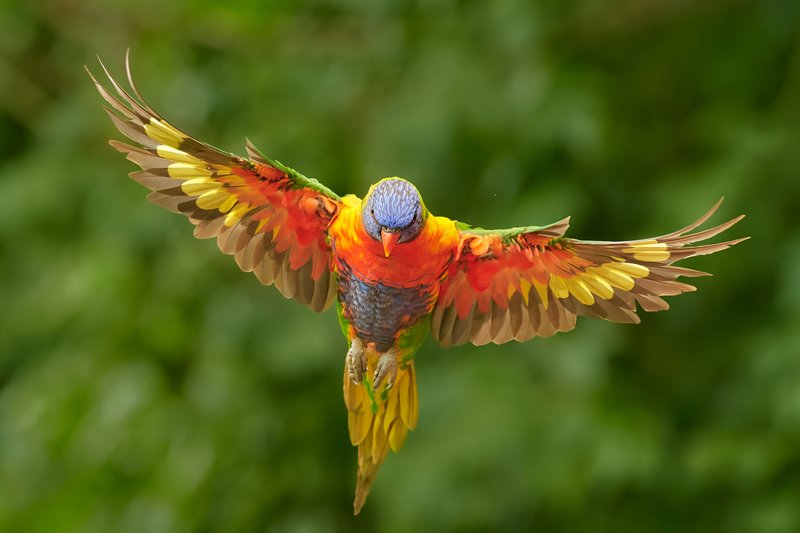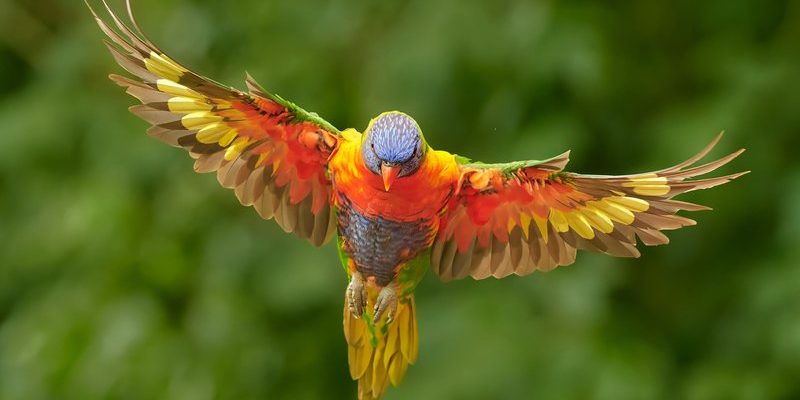
It’s fascinating to consider how various birds have adapted to find and eat these soft-bodied larvae. Imagine a gourmet chef meticulously selecting ingredients at a market; that’s how some birds approach inchworms. They’re not just good at spotting these critters; they know the right time and technique to catch them. Let’s dive into some of the bird species that consider inchworms a top-tier meal choice.
Why Inchworms Are Appealing to Birds
Inchworms are more than just squirmy little bugs; they’re a *nutritional powerhouse* for many birds. High in protein and moisture, inchworms provide a quick energy boost, especially during breeding season when adult birds are busy feeding their chicks. The tender texture of inchworms makes them easy to digest, perfect for growing babies that need all the nutrition they can get.
To add to their appeal, inchworms often blend into their surroundings, making them a valuable snack for birds that are good at hunting. These little guys primarily feed on leaves, which means they can be found in abundance wherever lush vegetation exists. The combination of their nutritional value and availability makes them a sought-after food source.
You might be wondering how birds find these inchworms. It’s all about their keen vision and listening skills. Some birds can spot the slightest movement, while others listen for the crunching sounds of inchworms munching on leaves. This adaptability in foraging methods helps them thrive in various environments.
Common Bird Species That Feast on Inchworms
There are several bird species that specifically target inchworms as a food source. Let’s take a closer look at some of the most common ones:
- American Robin: A familiar sight in gardens and parks, robins are often seen hopping around, looking for insects and worms. They love inchworms, especially in spring when these critters are most abundant.
- Wood Thrush: Known for their beautiful song, wood thrushes are skilled foragers that thrive on a diet of insects, including inchworms. Their habitat in deciduous forests provides plenty of this delicacy.
- Black-capped Chickadee: These small, energetic birds may be tiny, but they have a big appetite for all sorts of insects. Inchworms are a favorite during the warmer months as chickadees hunt through foliage.
- Eastern Bluebird: With their vibrant colors, bluebirds are a joy to spot. They enjoy a varied diet, but you’ll find them snatching up inchworms when available, especially while raising their young.
Each of these species has unique foraging habits and habitats that make them excellent inchworm hunters. The versatility in their diets means that while they prefer inchworms, they aren’t picky eaters and will munch on other insects if necessary.
Inchworm Hunting Techniques
Birds employ various techniques to catch inchworms, and these methods are as diverse as the species themselves. Let me explain some of the most common approaches:
1. Stealth and Patience
Some birds, like the American robin, are known for their *stealthy approaches*. They’ll often pause mid-hop, scanning the ground and nearby vegetation for any movement. This patience pays off, as inchworms are often slow-moving, making them easy targets.
2. Vocalizations and Calls
Wood thrushes are a perfect example of birds that use *vocalizations* to their advantage. Their beautiful songs are not just for serenading; they often attract attention from potential prey. A nearby inchworm may find itself distracted by the melodious tunes before being snatched up.
3. Visual Recognition
Black-capped chickadees have incredibly sharp eyesight, which they rely on to spot inchworms in leaves. They can often see minute details and movements that escape the notice of larger animals. Their agility helps them navigate through branches and foliage to find their meals.
Each hunting technique underscores the adaptability of birds in their search for food. Some methods involve patience and stealth, while others rely on keen eyesight or clever distractions. This adaptability has made them successful hunters in various habitats.
Seasonal Variations in Diet
Bird diets change with the seasons, and inchworms play a significant role, especially during spring and early summer. As temperatures rise, inchworm populations tend to boom, providing a buffet for hungry birds. Let’s break down how their feeding habits can vary throughout the year.
During the colder months, many birds switch to a diet of seeds and nuts, as insects are scarce. However, as spring unfolds, inchworms emerge from their pupal stage, ready to be devoured. This seasonal shift in food availability encourages birds to adapt their foraging strategies.
In the summer, when adult birds are feeding their chicks, the demand for inchworms peaks. Parents tirelessly search for these insects to provide their young with the necessary nutrition for growth. The abundance of inchworms gives these busy birds a much-needed boost during a critical time.
By the time fall arrives, many birds have either migrated or prepared for winter. The diet shifts again, with fewer inchworms available, and birds will revert to more energy-rich food sources to sustain themselves through the colder months.
Protecting Birds and Their Food Sources
With the ongoing challenges facing bird populations today, it’s crucial to protect their natural habitat—especially the ecosystems where inchworms thrive. Here are some ways to support our feathered friends and their food sources:
- Plant Native Vegetation: By planting native trees and bushes, you help create an environment where inchworms can flourish. Many trees offer leaves that are perfect for inchworm reproduction.
- Avoid Pesticides: Pesticides can harm both inchworms and the birds that feed on them. Using organic gardening methods can promote a healthier ecosystem.
- Provide Bird Feeders: While birds love insects, feeders stocked with seeds can help them maintain energy levels, especially when natural food sources are scarce.
- Create Water Sources: A simple birdbath can make a significant difference, providing birds with drinking and bathing opportunities.
Taking these steps not only helps birds thrive but also supports the entire ecosystem. The more we learn about the connections between birds and their food sources, the better we can protect them.
Birds that prefer feeding on inchworms illustrate the intricate web of life in nature. From the American robin to the eastern bluebird, each species plays a vital role in maintaining ecological balance. Inchworms, often overlooked, are a crucial part of the food chain, providing essential nutrition to many birds, especially during the breeding season.
By understanding the importance of inchworms in the avian diet, we can better appreciate the complexities of nature. So, the next time you see a bird hopping around your garden, think of the hidden treasures they’re hunting for—and how each tiny inchworm contributes to the cycle of life. Let’s continue to protect these amazing creatures and their habitats, ensuring that both birds and inchworms can thrive together.

